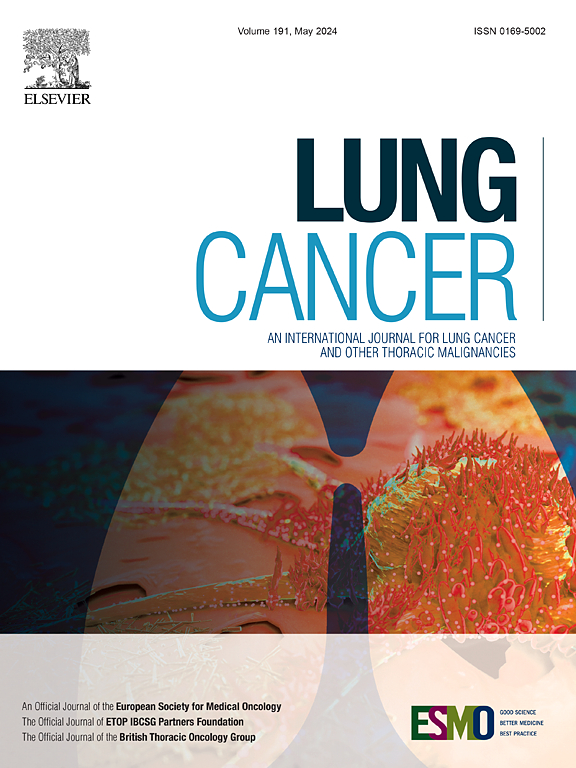Stereotactic body radiation therapy (SBRT) of centrally located medically inoperable early-stage non-small cell lung cancer (T1-T3N0M0) − A subgroup analysis of the expanded HILUS study
IF 4.5
2区 医学
Q1 ONCOLOGY
引用次数: 0
Abstract
Introduction
Centrally located early-stage non-small cell lung cancer (ES NSCLC) with tumors close to the bronchi is potentially curable with stereotactic body radiation therapy (SBRT). To evaluate the clinical benefit of the treatment, both the risk of high-grade toxicity as well as the treatment efficacy need to be assessed.
Material and methods
From the expanded HILUS cohorts, 72 patients with T1-T3N0M0 NSCLC were included in the current analysis. All patients had been treated with SBRT in 8 fractions to 56 Gy for a tumor located within 2 cm from the tracheobronchial tree. Primary endpoint was progression free survival (PFS) and secondary endpoints included pattern of failure, local control (LC), lung cancer-specific survival (LCSS), overall survival (OS) and toxicity. The Kaplan-Meier method and Cox regression analysis were used.
Results
The median age of the cohort was 73 years and all patients suffered from comorbidities prior to SBRT. T2-T3 tumors were seen in 65 % of the patients. Seventeen patients relapsed after SBRT and distant recurrence was the most common form of relapse. Three-year PFS was 31 % (95 % CI 22–44) and largely explained by the short overall survival (38 % (95 % CI 22–44) at 3 years). Three-year rates of LC and LCSS were 97 % (95 % CI 92–100) and 76 % (95 % CI 65–89), respectively. Twelve patients (17 %) suffered from grade 5 toxicity, of which 9 were bronchopulmonary bleedings.
Conclusion
The severe toxic profile limits the clinical benefit using SBRT with the investigated approach for patients with centrally located ES NSCLC.
求助全文
约1分钟内获得全文
求助全文
来源期刊

Lung Cancer
医学-呼吸系统
CiteScore
9.40
自引率
3.80%
发文量
407
审稿时长
25 days
期刊介绍:
Lung Cancer is an international publication covering the clinical, translational and basic science of malignancies of the lung and chest region.Original research articles, early reports, review articles, editorials and correspondence covering the prevention, epidemiology and etiology, basic biology, pathology, clinical assessment, surgery, chemotherapy, radiotherapy, combined treatment modalities, other treatment modalities and outcomes of lung cancer are welcome.
 求助内容:
求助内容: 应助结果提醒方式:
应助结果提醒方式:


